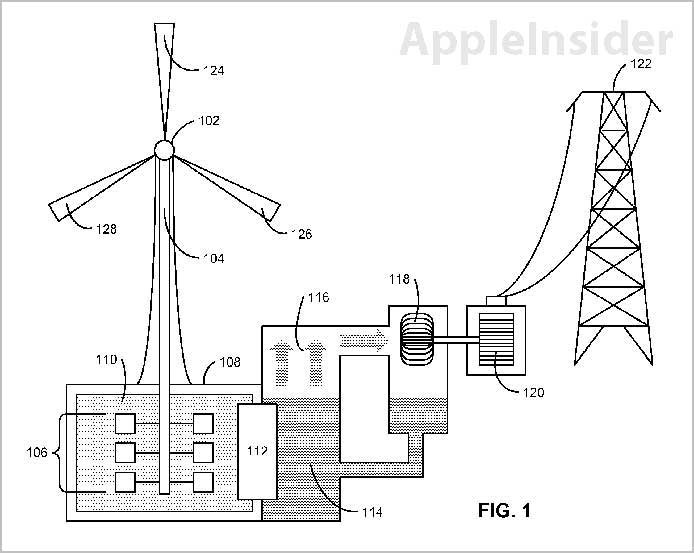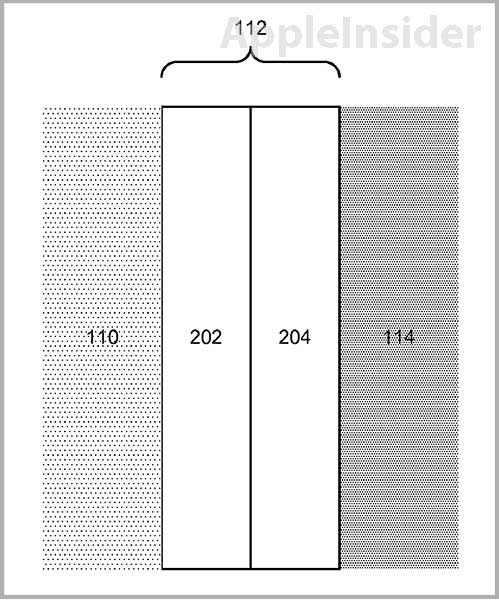Apple's wind turbine technology uses heat, not rotational energy to generate electricity
In a rare non-computing related patent filing discovered on Thursday, Apple proposes a wind turbine that generates electricity from converting heat energy rather than rotational energy created by the rotation of the unit's blades.
While Apple is best known for inventing, and patenting, technology for computers and mobile electronics, the company also dabbles in seemingly radical ideas for an OEM. Such is the case with a an application published by the U.S. Patent and Trademark Office for the "On-demand generation of electricity from stored wind energy," an invention wholly dedicated to solving problems of variability associated with the alternative energy production method.
The application, filed for in June 2011, notes that most contemporary wind turbines convert kinetic energy from wind into mechanical energy, or in some cases electricity. Basic windmill technology is well known: wind energy is asserted on a mill's sails or blades and is converted into rotational energy through a drive shaft, which then powers machinery or, more recently, electric generators. It is apparent that the process is dependent on a steady supply of wind which, as Apple's filing notes, is highly variable.
To mitigate these inconsistencies, the filing proposes a system that converts rotational energy from the turbine into heat, which is then stored in a "low-heat-capacity" fluid. From storage, heat can be selectively transferred to a "working fluid" that is used to generate electricity during lulls in wind activity.
In some embodiments, heat is generated from the friction created between blades connected to the rotor shaft and the low-heat-capacity fluid, such as mercury, ethanol or an inert gas, in which they are immersed. Thermal energy is stored in an insulated vessel. A thermally insulating component like a radiator or conductive rod can be used to selectively transfer heat from the low-heat-capacity fluid to the working based on electrical demand. Finally, the working fluid boils and creates steam which rotates a turbine connected to an electric generator.
According to the patent application, the "on-demand" electric generation system can reduce costs associated with natural variations in wind supply. Further, the method can be used as a replacement for current conventional energy storage methods such as batteries.
Whether Apple plans to deploy such a wind turbine system is unclear, but Cupertino is investing heavily in alternative energy sources like solar and natural gas "energy servers," as seen at the company's Maiden, N.C. data center.
 Mikey Campbell
Mikey Campbell












 Marko Zivkovic
Marko Zivkovic
 David Schloss
David Schloss

 Malcolm Owen
Malcolm Owen

 William Gallagher
William Gallagher
 Mike Wuerthele
Mike Wuerthele
 Christine McKee
Christine McKee






